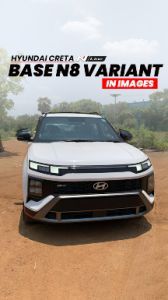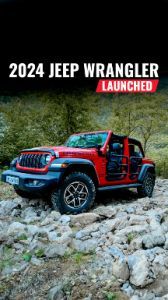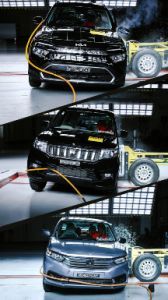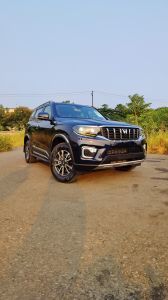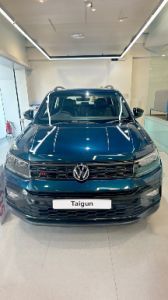 In 8 Pics: Volkswagen Taigun GT Plus Sport Detailed
In 8 Pics: Volkswagen Taigun GT Plus Sport Detailed
Would You Rather Buy An E-cycle Or A Regular Cycle?
- Sep 9, 2022
- Views : 8395
- 5 min read
Is there more to e-cycles than just extra electrical components and sensors slapped onto a regular cycle?
Let’s face it, good electric scooters don’t come cheap and the “affordable” ones have their own set of issues. So if you’re on a tight budget, the only environment-friendly option you have is e-cycles. But are they worth the investment? And are e-cycles all that different compared to regular cycles? That’s exactly what this article delves into.
-
Check out some of the most popular electric cycles
-
EMotorad T-Rex, EMX and Karbon Electric Cycles: First Ride Review
Looks can be deceiving
It’s hard to tell the two apart thanks to technological advancements in the form of in-frame batteries and smaller yet powerful electric motors. The only difference between an e-bike and a traditional bike are the added electrical components – a motor, sensors, lithium-ion battery, controls, and a display.
Motor
An electric motor offers the extra boost one needs while pedalling. You can tweak the power and intrusiveness of the pedal assist by switching between different modes from the control module. If you're tired or just lazy, you can use the throttle and amble around between 5 and 20kmph. Motors can be mounted either at the front, centre or rear.
Sensors
the automobile community
E-bikes can have two types of sensors: cadence and torque. A cadence sensor detects the rotation of the pedals and intervenes with a specific amount of motor assistance determined by the module controls. A torque sensor, on the other hand, allows your bike to gauge the appropriate level of pedal assist for certain conditions. So, if you reach an incline, a torque-sensing bike will automatically offer pedal assist if you begin pedalling harder. Once you get back on flat terrain, the pedal assistance will ease off.
Battery
E-bikes usually come with either lithium-ion or lithium polymer batteries. Their capacity levels and several other factors determine how far you'd go on a single charge. Recharging it is as easy as unlocking/unclipping it from your bike and charging using a 5v socket. Charge times vary from 5-8 hours.
Controls
Electric bike controls are generally integrated with the bike's display but occasionally have small buttons located on the left-hand side of your handlebars. These buttons allow you to toggle between different pedal assistance levels.
Display
Your display will show a host of information ranging from battery level, range, speed, odo, and pedal assistance mode. The feature list depends on the type of e-bike you're riding.
Riding experience
An e-cycle and a traditional cycle share similar frames, tyres, brakes, gears and accessories. So the overall riding experience isn’t all that different. You still have to pedal as you would on a regular cycle and change gears too.
The only difference is that an e-cycle is easier to ride. Inclines and long journeys are a breeze. You'll even feel less tired by the end of the ride as opposed to a regular cycle. Moreover, the power delivery from the motor is extremely smooth, so you’ll barely notice the difference while riding a traditional cycle.
Sheer weight?
Of course, the additional circuitry and electrical components add to an e-cycle’s overall weight. So they are a tad heavier than regular cycles. Regular cycles usually weigh about 10-16kg, depending on the type and size of the cycle. Electric cycles weigh between 18 and 25kg and can even go up to 55kg for bikes like the Polarity Smart Sport.
The weight difference while riding an e-cycle is negligible thanks to the inputs from the motor. But the weight becomes pretty evident if you carry the cycle up a flight of stairs or steep terrains.
Going the distance
E-bike motors can reach speeds of up to 20-30kmph (depending on the specific class of the e-bike). But the motor cuts out beyond these speeds, which means you’re essentially riding a regular cycle purely dependent on the strength of your legs and pedal power.
That being said, electric bikes may get you around the city much quicker since the motor assist makes pedalling feel effortless, allowing you to maintain your energy levels and feel less fatigued. Maintaining constant speeds and getting back up to speed after coasting is much easier as well. This effectively lets you cover longer distances compared to a regular cycle. The SVITCH XE+ has a claimed range of 80 km/charge, which is more than enough for daily commutes.
Cost?
Electric bikes are unquestionably more expensive to buy than their regular counterparts. A good quality e-cycle in India, for example the Hero Lectro Electric C3 could start at around Rs 28,000 and go up to Rs 1 lakh or more, for cycles like the Hero Lectro EHX20 which features a detachable battery and a mid-mounted motor, both of which are sourced from Yamaha. So the price of e-cycles is considerably higher if you’re looking for something a bit more premium, considering you could pick up a decent traditional mountain bike for under Rs 35,00.
So which one should you pick?
Several factors come into play when choosing between regular and electric cycles. Ask yourself: what is your primary reason for purchasing either of these bikes?
If your answer is daily commutes or long-distance rides, an e-cycle will make life a lot easier. It's the perfect addition for those who aren't as young or fit or for those living in areas full of steep hills.
On the other hand, if you want to be more active on your commute, consider getting an old-fashioned regular bicycle instead. There are plenty of options to choose from, no matter which way you go. What’s important is knowing what you’d use the cycle for.
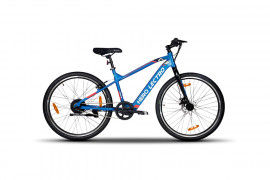
Hero Lectro C3 Alternatives
-
 Hero Lectro H5
Rs. 28,999C3 vs H5
Hero Lectro H5
Rs. 28,999C3 vs H5 -
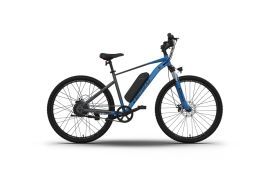 EMotorad X1
Rs. 24,999C3 vs X1
EMotorad X1
Rs. 24,999C3 vs X1 -
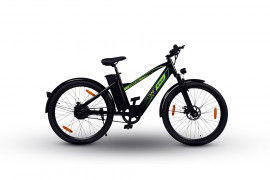 Nexzu Roadlark
Rs. 32,950C3 vs Roadlark
Nexzu Roadlark
Rs. 32,950C3 vs Roadlark -
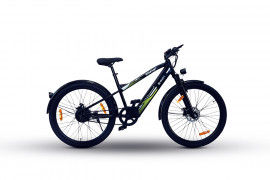 Nexzu Rompus Plus
Rs. 29,900C3 vs Rompus Plus
Nexzu Rompus Plus
Rs. 29,900C3 vs Rompus Plus -
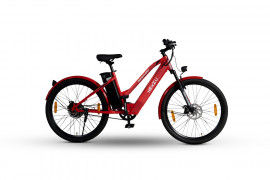 Nexzu Bazinga
Rs. 32,950C3 vs Bazinga
Nexzu Bazinga
Rs. 32,950C3 vs Bazinga
See what our community has to say! NEW
India's largest automotive community








